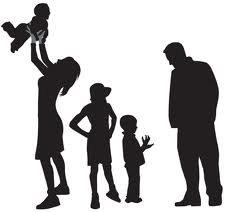Teen parenting can be one of the scariest and most intimidating realities faced by any pregnant teen. However, choosing teen parenting over adoption or terminating the pregnancy can also be a noble choice if the teen is prepared to seek help in providing a good life to their baby.
Teen pregnancy is often considered to be a huge epidemic particularly in the United States. Unfortunately about $18 billion is spent each year in the United States on resources to help pregnant teens receive medical care as well as assistance for raising their children. Teen parents are also found to have less access to the knowledge and parenting education they need to make responsible parenting decisions. The teen drop out rate of high school for pregnant teens is about 60 percent. However, despite the struggles that many teens face when they get pregnant, that does not mean they are meant to struggle, drop out of school or become a weight on society. In fact, many teen parents are able to successfully become parents and raise happy and healthy children while leading a successful life themselves. Ultimately it comes down to how much the teen parents seek help and assistance in developing their parenting skills. Pregnant teens are wise to weigh the pros and cons of teen parenting before they make their decision on whether or not to keep the baby.
Teen Parenting Pros and Cons:
While teen parenting is one of the toughest undertakings a person can ever face, it is possible. Many teens find they have higher rates of success as an adult because of the struggles they faced during their teen years. In addition to the valuable experience of becoming a parent, many teen parents find the available resources that exist to specifically benefit those who decide on teen parenting versus alternative options during the pregnancy. Options that exist to help benefit teen parents include alternative high schools that offer daycare options for teens while they attend classes. This is a free service that teens can use to complete their high school education while being able to receive free child care where they can still attend to some of the needs of their babies during the day if needed since the daycare is located on the school campus.
Other benefits for teen parents include programs like Women, Infant, Children (WIC) that are designed to ensure proper nutrients for babies and breast-feeding mothers. Welfare programs and scholarships are also available for teen parents. Teens can rely on these programs even if they are not receiving financial or emotional support from their friends or families. So teens who feel like they have no options, there are options available for teen parenting assistance including parenting classes that teens can take while pregnant or after they have the baby. They can learn about breast feeding, teen parenting assistance programs, etc.
However, despite the many programs that are available for pregnant teens who decide on teen parenting, the struggles they face are incredible. These struggles include financial difficulty, troubles in finishing school and receiving financial and emotional support from their friends, family and parents. Teen parenting statistics show that teens are not only more likely to drop out of school and not pursue a college education, but they are also more likely to make up a good portion of those under the poverty level income. Teen parenting is one of the most difficult parts of teen pregnancy, but for some the troubles of becoming a teen parent are better than giving the baby up for adoption or deciding to terminate the pregnancy.
If you are a pregnant teen and are considering teen parenting as one of your options, it might be a good idea to examine what resources you have available. For some teens that have a strong family background and support, being a teen parent is not as difficult as those teens that don’t have that family support. Explore what options you have before you make any final decisions regarding teen parenting and other options you have with teen pregnancy. Keep in mind that with so many resources available for teens as parents, it is possible for successful teen parenting among teens in the United States.
sources: practicenotes.org, insightstpp.org









